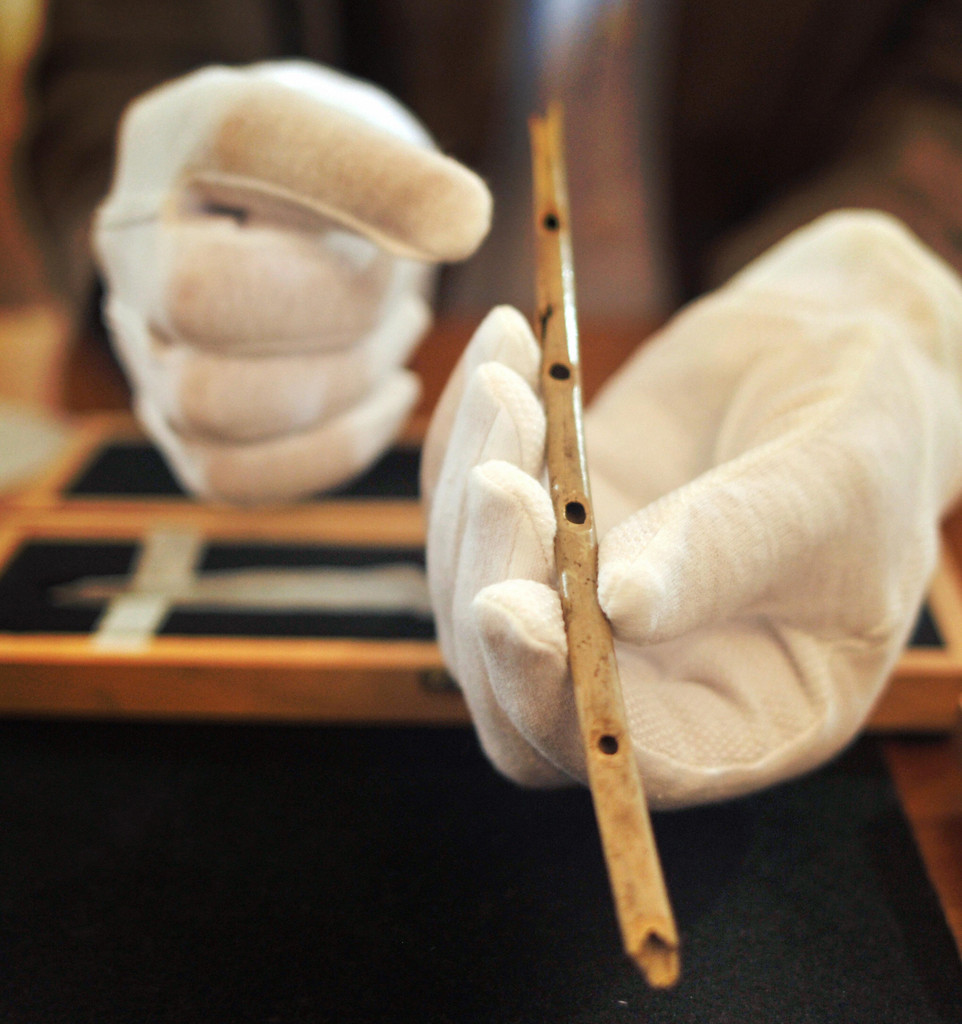Unveiling the Ancient Flutes
In the summer of 2008, an extraordinary find was made at the Hohle Fels and Vogelherd sites in Germany. Archaeologists uncovered what is thought to be the oldest musical instrument known to humanity—a nearly intact bone flute along with fragments from three ivory flutes, all dating back to the Paleolithic era.

The Bone Flute of Hohle Fels
Among these discoveries, the standout artifact was an almost complete bone flute located in the basal Aurignacian layers at Hohle Fels Cave in the Ach Valley. Comprising 12 fragments spread across a small area, this flute is recognized as the most complete musical instrument found in the Swabian caves to date.
Craftsmanship and Materials
The surviving portion of the Hohle Fels bone flute measures 21.8 cm in length and 8 mm in diameter, featuring five intact finger holes. The flute’s surface and bone characteristics provide intricate insights into its craftsmanship. At one end, the maker carved two deep, V-shaped notches designed for the musician to blow into.

Notably, this flute was crafted from the radius bone of a griffon vulture, a bird renowned for its large wingspan, making it suitable for producing sizable flutes. The Upper Paleolithic deposits in the Swabian caves indicate a presence of griffon vultures and other vulture species.
The Ivory Flutes
Alongside the bone flute, the excavations in 2008 at Hohle Fels also revealed two small shards believed to belong to separate ivory flutes. Moreover, another isolated ivory flute fragment was found at Vogelherd, about 25 km northwest of Ulm.

Technological Complexity
Creating a flute from bird bone was a relatively straightforward process compared to crafting one from ivory. The latter required a more elaborate approach involving rough shaping along its length, splitting it open along natural bedding planes, careful hollowing out, and precise hole carving. The two halves had to be meticulously joined to create an airtight seal, making these artifacts particularly delicate and susceptible to breaking.
Significance and Cultural Implications
Dating and Context
Radiocarbon dating indicates that the flutes from Hohle Fels are older than 35,000 years, marking them as the earliest known musical instruments globally. These findings illuminate the importance of music within the Aurignacian culture of the Ach and Lone valleys in southwest Germany.

Music and Social Cohesion
The flutes were discovered in archaeological layers abundant with lithic and organic materials, animal remains, and other refuse, suggesting that music was integral to the social and cultural dynamics of the inhabitants. The proximity of the bone flute to a similarly aged female figurine at Hohle Fels hints at a potential contextual relationship between these artifacts, further underscoring the significance of music and artistry in the lives of Upper Paleolithic peoples.
Music and Human Evolution
While music did not directly enhance subsistence strategies or reproductive success, it is thought to have bolstered social cohesion and facilitated new forms of communication. This enhancement may have indirectly aided the demographic expansion of modern humans compared to the more culturally conservative Neanderthal populations.
These ancient flutes offer a fascinating glimpse into the vibrant musical traditions that arose alongside early figurative art, personal adornment, and technological advancements during the Aurignacian period, representing a pivotal moment in human cultural evolution.

